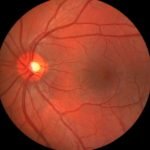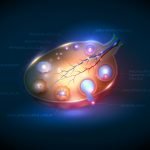Reversing the Autoimmune Process
Brian Davies, ND, BSc
The immune system represents the body’s primary physiological interface with our external environment. This interface occurs naturally when an environmental antigen contacts mucosal surfaces of the respiratory, gastrointestinal, vaginal or urethral membranes, as well as the skin (Bland and Liska, 2005). Alternately and less naturally, antigen may be encountered by the immune system in the lymphatic or blood system through injection, damaged epithelial or mucosal membranes, lipophilic absorption or liver sinusoidal dilatation and lymphatic dumping (Bland and Liska, 2005; Kakar 2004; Matsen, 1998). Once an allergen has been identified by cell-mediated mechanisms, the humoral immune system creates antibodies against the antigen, targeting it for destruction (Bland and Liska, 2005). The autoimmune response is thought to occur when hypersensitive antibodies react with or are produced against normal body tissues.
The Autoimmune Response
Several of the major concerns with autoimmune disease are an excess of circulating antibody complexes and cellular damage, which may increase the likelihood of a cross-reactivity with normal body tissues (Matsen, 1998; Sun et al., 2005; Lopes-Virella and Virella, 1994; Ahsan et al., 2003; Kurien et al., 2006). Therefore, it is no surprise that many, if not all, autoimmune conditions have been associated with exposure to excess environmental allergens or antigens (Vasquez, 2005). This exposure can occur from food toxins, environmental toxins, yeast and bacterial endotoxins; however, exposure may also occur due to Phase I oxidation of lipophilic toxins, leading to excess circulation of antigenic and superoxide moieties (Vasquez, 2005; Kalabis, n.d.; Koch and Goldman, 1979; Koch et al., 1979; Scheline, 1973; Cummings and Englyst, 1983; Mitsuoka, 1992; Chhabra, 1979; Liska, 1998; Cordain, 1999). Food allergies and “sensitivities” have been linked to most, if not all, types of autoimmune disease (Vasquez, 2005; Cordain, 1999; Crinnion, 2000; Kitts, 1997; Danieli and Candela, 1990). Mercury, a type-1 sensitizing agent found in vaccines and dental amalgams, has been associated with MS, amyotrophic lateral sclerosis (ALS), atopic dermatitis and psoriasis, among many other autoimmune diseases and allergies (Prochazkova et al., 2004; Huggins and Levy, 1998; Weidinger et al., 2004). Colonization of the small intestine with yeast, protozoa and gram-negative bacteria may promote an immune response that cross-reacts with human body tissues (Wucherpfennig, 2001; Gray et al., 2003). The question is: Why is the immune system being sensitized to exposures that the liver and intestinal mucosa are supposed to be neutralizing? One answer may be that the major barriers of the body, like the GI mucosa, may be compromised. Another answer, for many patients, may be that the liver and intestinal Phase II detoxification pathways are overwhelmed or damaged and cannot conjugate exposure to toxins fast enough.
Where Problems Arise
Phase I activation or induction by pharmaceuticals, environmental toxins and food components has been well researched (Kalabis, n.d.; Liska, 1998). Studies also show evidence that induced Phase I and/or inhibited Phase II increases the risk of diseases, such as cancer, SLE and Parkinson’s Disease, most likely through oxidative damage to DNA, RNA, membrane lipids and cellular proteins (Liska, 1998). While Phase I detoxification generally involves oxidation of substrates into epoxides, peroxides and aldehydes, Phase II enzymes neutralize these toxic chemicals into harmless water-soluble metabolites through the process of conjugation (Kalabis n.d.; Liska, 1998). Phase II enzymatic reactions are rate limiting in much of the population, because they are highly nutrient intake dependent and rely heavily on sensitive sulfur groups for conjugation to the oxidized Phase I products (Liska, 1998). Sulfur is extremely reactive with mercury, lead, silver, arsenic, cadmium and other metals mined from sulfur ores, among many other environmental toxins (Patrick, 2002; Mineralogical Society of America, n.d.). As most people are exposed to elemental mercury and silver in dental amalgams; ethylmercury, found in fungicides (think citrus fruits) and vaccines; and inorganic mercury in cosmetics, laxatives, nasal spray, teething powders, diuretics, antiseptics and some fish; chronic weakness in the Phase II detoxification system may be very common (Patrick, 2002). Further, heavy metals may not easily be removed from the body naturally. Although 90% of mercury is said to be excreted in the bile complexed with glutathione and cysteine, greater than 70% of that excreted mercury is thought to undergo enterohepatic cycling, and thus returned to the liver (Patrick, 2002; Clarkson, 2002; Alexander and Aaseth, 1982). Further, mercury will move, bind and stay in areas with high sulfur content (Patrick, 2002; Divine et al., 1996). Glutathione is the most common low-molecular weight sulfhydryl-containing compound in mammalian cells (Patrick, 2002; Sen, 1997). This allows for high deposition of mercury and other metals in liver, kidneys, spleen, plasma, placenta, fetal or adult brain tissues and essentially any fatty organ system (Patrick, 2002). Some effects of mercury in the brain relating to autoimmunity are demyelination, abnormal cell division, mitochondrial damage, microtubule destruction, and DNA and lipid peroxidation, leading to cellular damage (Patrick, 2002). Cellular damage in the form of DNA, protein and lipid peroxidation from reactive oxygen species has been shown to elicit autoantibody production in a variety of diseases, including but not limited to SLE, alcoholic liver disease, DM, RA, Behcet’s, scleroderma and ALS (Matsen, 1998; Sun et al., 2005; Lopes-Virella and Virella, 1994; Ahsan et al., 2003; Kurien et al., 2006; Niebroj-Dobosz et al., 2006).
Autoimmunity is one of the most complex topics known to modern medicine. While advancements in the characterization of autoimmune conditions have occurred, failure to identify a foundational etiology remains. As discussed, there have been many researched mechanisms as to how the immune system begins to attack “normal” body tissues. These mechanisms primarily involve damage to the body by external or environmental influences, which may lead to the breakdown of homeostatic balance in susceptible persons. Gastrointestinal integrity and optimal liver function are the body’s essential defense against environmental damage. Glutathione is the key cofactor required by the body to reduce cellular damage by reactive oxygen species and heavy metal toxicity. Therefore, a reduction in glutathione and other Phase II detoxification nutrients, damage to gastrointestinal mucosa and heavy metal immune sensitization, and cellular damage may be the trigger for immune dysfunction and require adequate attention to reverse the autoimmune process.
Case Study
GJ is a 51-year-old male with chief complaints of change in speech; difficulty swallowing; lack of taste sensation; biting of the tongue; tinnitus; weakness of the eye musculature; and systemic muscle fasciculations, weakness and loss of muscle control. The symptoms first appeared in August 2004. In February 2006, he was referred to the Fraser Health Multiple Sclerosis Clinic at Burnaby general hospital for a complete neurological evaluation and EMG by two neurologists. Although testing was inconclusive, the neurologist indicated to GJ that they “couldn’t say that everything was fine.” As the symptoms were suggestive of a diagnosis of ALS, GJ was referred to one of the top ALS authorities at the Vancouver Coastal Health ALS Centre within GF Strong Rehabilitation Centre in Vancouver General Hospital. EMG studies were performed on April 17, 2006. Although these EMG studies were again inconclusive for a definitive diagnosis of ALS, GJ was asked to return for further EMG testing.
ALS is a progressive neurodegenerative disease that affects motor neurons in the brain and the spinal cord. ALS is directly hereditary in approximately 10% of cases; however, the majority of patients with adult-onset or sporadic-type ALS (90%) have no family history (The ALS Association, n.d.; ALS Society of Canada, n.d.). Several mechanisms have been proposed in the etiology of ALS. Genetic mutation of superoxide dismutase, which, along with glutathione peroxidase, is responsible for reducing cellular free radical damage, has been associated with familial-type ALS (Ferri et al., 2006; Bruijn et al., 1997). A depletion of neuronal glutathione has also been associated with nerve degeneration and death, leading to ALS-like disease in mouse models (Chi et al., 2006). Autoimmune reactions against neurofilaments and desmin proteins of neurons, as well as IgG-mediated synaptic glutamate neurotransmitter release, have also been demonstrated to play a potential role in the neurodegeration associated with ALS (The ALS Association, n.d.; Andjus, 1997; Ischiropoulos and Beckman, 2003). Oxidative damage through immune function, immune cell degranulation and mitochondrial dysfunction have also been proposed as mechanisms of neuronal death (Ischiropoulos and Beckman, 2003; Schon and Manfredi, 2003).
GJ came to the Northshore Naturopathic
Clinic on May 10, 2006. Patient history revealed no family history of ALS. Significant concern about a diagnosis of ALS and depressive symptoms were noted, among the above concerns. Dietary recommendations from the book Eating Alive were suggested, along with liquid calcium magnesium and silica to strengthen the iliocecal valve, a Phase II detoxification enzyme multi-mineral support, liquid sublingual methylcobalamin/folate and bioflavonoid pycnogenol. The patient returned May 25, where Bacillus laterosporus (BOD strain) was recommended for yeast and bacterial dysbiosis in the small intestine. A history of mercury exposure revealed that the patient had childhood vaccinations, 11 mercury amalgams and one root canal packed with mercury amalgam to the bone. To further determine heavy metal toxicity, the patient was referred for a DMPS urinary challenge (see Figure 1 for results), because it is the only accurate means of assessing the tissue burden of heavy metals aside from an autopsy.
On June 22, GJ reported “feeling good,” with slightly less fasciculations, and was prescribed oral DMSA chelation therapy at 100mg every three days. On August 8, GJ was prescribed a neurological support multi-supplement and an immune support product. On September 21, the patient reported a further decrease in muscular fasciculation and was prescribed omega 3, 6 and 9 parent fatty acid blend and Coenzyme Q10. In October, as an adjunct to oral DMSA chelation, GJ underwent IV DMPS chelation each month for five months (see Figure 2 for results).
GJ returned to Vancouver Coastal Health ALS Centre for re-evaluation by EMG in October. Results indicated that a diagnosis of ALS was highly unlikely. This was very significant to the patient, considering previous findings.
 Brian Davies, ND, BSc graduated from the University of Victoria in 2000, and completed his post-graduate studies at CCNM in 2006. With special interests in hormonal, autoimmune and gastrointestinal conditions, Dr. Davies practices family medicine at the Northshore Naturopathic Clinic in North Vancouver. He focuses primarily on prevention of disease and lifestyle modifications, adding nutritional, botanical and homeopathic interventions as needed. Dr. Davies extends special thanks to Drs. Jonn Matsen, Sandy Wood and David Lescheid for their unconditional support and influence on his practice of naturopathic medicine.
Brian Davies, ND, BSc graduated from the University of Victoria in 2000, and completed his post-graduate studies at CCNM in 2006. With special interests in hormonal, autoimmune and gastrointestinal conditions, Dr. Davies practices family medicine at the Northshore Naturopathic Clinic in North Vancouver. He focuses primarily on prevention of disease and lifestyle modifications, adding nutritional, botanical and homeopathic interventions as needed. Dr. Davies extends special thanks to Drs. Jonn Matsen, Sandy Wood and David Lescheid for their unconditional support and influence on his practice of naturopathic medicine.
References
Bland J and Liska L: Digestion and excretion, The Textbook of Functional Medicine, Gig Harbor, 2005, The institute of Functional Medicine, pp 189-201.
Kakar S et al: Sinusoidal dilatation and congestion in liver biopsy: is it always due to venous outflow impairment?, Arch Pathol Lab Med Aug;128(8):901-904, 2004.
Matsen J: Secrets to Great Health, North Vancouver, 1998, Goodwin Books Ltd., 49-66,111-156.
Sun J et al: Glassy dynamics in the adaptive immune response prevents autoimmune disease, Phys Rev Lett Sept 30; 95(14), 2005.
Lopes-Virella MF and Virella G: Atherosclerosis and autoimmunity, Clin Immunol Immunopathol Nov;73(2): 155-67, 1994.
Ahsan H et al: Oxygen free radicals and systemic autoimmunity, Clin Exp Immunol Mar;131(3):398-404, 2003.
Kurien BT et al: Oxidatively modified autoantigens in autoimmune diseases, Free Radic Biol Med Aug 15;41(4):549-56, 2006.
Vasquez A: Inflammation and autoimmunity: A funtional medicine approach. In The Textbook of Functional Medicine, Gig Harbor, 2005, The Institute of Functional Medicine, pp 189-201.
Kalabis G: Toxicology and public health, Lec 1 P1-29, Bastyr University Textbook for course BAS 420.
Koch RL and Goldman P: The anaerobic metabolism of metronidazole from from N-(2-hydroxyethyl)-oxamic acid, J Pharmacol Exp Ther 207:406-410, 1979.
Koch RL et al: Acetamide: A metolite of metronidazole formed by the intestinal flora, Biochem Pharmacol 28:3611-3615, 1979.
Scheline RR: Metabolism of foreign compounds by gastrointestinal microorganisms, Pharmacol Rev 25:451-523, 1973.
Cummings JH and Englyst HN: Fermentation in the human large intestine: Evidence and implications for health, Lancet 43:35-44, 1983.
Mitsuoka T: Intestinal flora and aging, Nutr Rev 50:438-446, 1992.
Chhabra RS: Intestinal absorption and metabolism of xenobiotics, Environ Health Perspect December; 33: 61-69, 1979.
Liska D: The detoxification enzyme system,. Altern Med Rev 3(3):187-197, 1998.
Cordain L: Cereal grains: humanity’s double-edged sword, World Rev Nutr Diet 84, 19-73, 1999.
Crinnion WJ: Environmental medicine, part one: the human burden of environmental toxins and their common health effects, Altern Med Rev Feb;5(1):52-63, 2000.
Kitts D: Adverse reactions to food constituents: allergy, intolerance, and autoimmunity, Can J Physiol Pharmacol Apr;75(4):241-54, 1997.
Danieli MG and Candela M: Diet and autoimmunity (in Italian), Recenti Prog Med Jul-Aug;81(7-8):532-8, 1990.
Prochazkova J et al: The beneficial effect of amalgam replacement on health in patients with autoimmunity, Neuro Endocrinol Lett Jun;25(3):211-8, 2004.
Huggins HA and Levy TE: Cerebrospinal fluid protein changes in multiple sclerosis after dental amalgam removal, Altern Med Rev Aug;3(4):295-300, 1998.
Weidinger S et al: Body burden of mercury is associated with acute atopic eczema and total IgE in children from southern Germany, J Allergy Clin Immunol Aug;114(2):457-9, 2004.
Patrick L: Mercury toxicity and antioxidants: Part 1: Role of glutathione and alpha-lipoic acid in the treatment of mercury toxicity, Altern Med Rev Dec; 7(6):465-471, 2002.
Wucherpfennig KW: Mechanisms for the induction of autoimmunity by infectious agents, J Clin Invest Oct;108(8):1097-1104, 2001.
Gray MR et al: Mixed mold mycotoxicosis: immunological changes in humans following exposure in water damaged buildings, Arch Environ Health Jul; 58(7):410-420, 2003.
Mineralogical Society of America: www.minsocam.org/MSA/collectors_corner/article/oremin.htm
Clarkson TW: The three modern faces of mercury, Enviro Health Perspect 110:11-23, 2002.
Alexander J, Aaseth J: Organ distribution and cellular uptake of methyl mercury in the rat as influenced by the intra- and extra-cellular glutathione concentration, Biochem Pharmacol 1982;31:685-690, 2004.
Divine KK et al: Glutathione, albumin, cysteine, and cys-gly effects on toxicity and accumulation of mercuric chloride in LLC-PK1 cells, J Toxicol Appl Pharmacol 141:526-531, 1996.
Sen C: Nutritional biochemistry of cellular glutathione, J Nutr Biochem 8:660-672, 1997.
Niebroj-Dobosz I et al: Auto-antibodies against proteins of spinal cord cells in cerebrospinal fluid of patients with amyotrophic lateral sclerosis (ALS), Folia Neuropathol 44(3):191-196, 2006.
The ALS Association: www.alsa.org/als/default.cfm?CFID=3144309&CFTOKEN=38563341
ALS Society of Canada: www.als.ca/
Ferri A et al: Familial ALS-superoxide dismutases associate with mitochondria and shift their redox potentials, Neuroscience September 12; 103(37): 13860-13865, 2006.
Bruijn LI et al: Elevated free nitrotyrosine levels, but not protein-bound nitrotyrosine or hydroxyl radicals, throughout amyotrophic lateral sclerosis (ALS)-like disease implicate tyrosine nitration as an aberrant in vivo property of one familial ALS-linked superoxide dismutase 1mutant, Neurobiology July 8; 94(14): 7606-7611, 1997.
Chi L et al: Depletion of reduced glutathione enhances motor neuron degeneration in vitro and in vivo, Neuroscience Dec 4, 2006.
Andjus PR: Immunoglobulins from motoneurone disease patients enhance glutamate release from rat hippocampal neurones in culture, J Physiol Oct 1; 504(Pt1):103-112, 1997.









